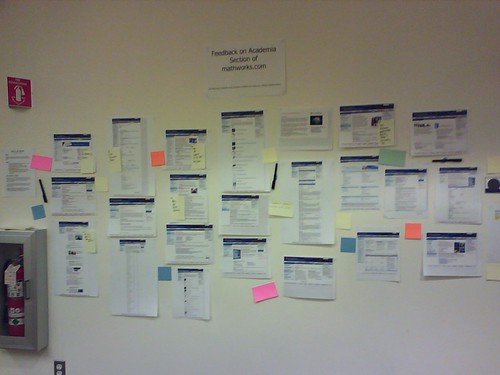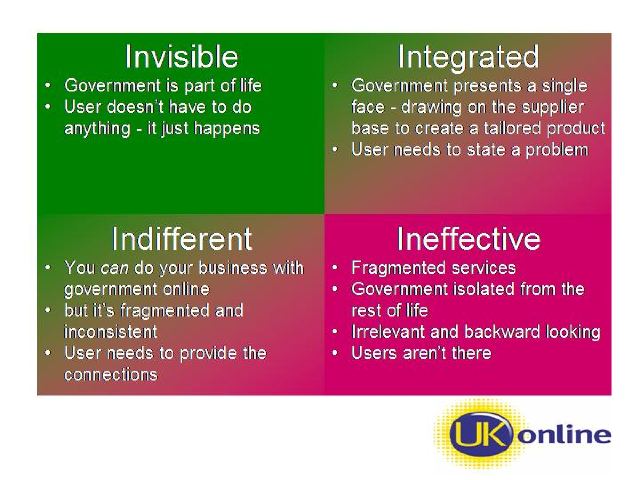
Image credit: Neil Williams
Like Simon and Andrew (watching from afar), Saturday’s Barcamp left me feeling optimistic about the state of digital engagement in and around government. The Power of Information Taskforce followed this up with the launch of their draft report which sets out an exciting, ambitious and refreshingly specific agenda for what we need to do and on what scale.
Scale, for me, is the crux of this now.
Simon rightly characterises Barcamp 08 as being about possibilities, whereas this year’s event saw an array of demos from Directgov’s nascent innovation platform to MoJ’s nearly-public social media kit for press officers; DFID’s blogging platform and the Twitterers of CLG & No 10, to my own project with Harry on a tool to publish consultation documents in structured XML for reuse.
The other sense I picked up was one of much greater connectedness. Last year, with relatively few of the participants blogging and even fewer tweeting, it felt like a conventional conference with lots of new introductions. This year, it felt like one big tweetup, with people buzzing to pick up conversations started online with people they were meeting in person for the first time, me included.
Having plugged away in a central government department on these issues for nearly a year now, I’m struck by the opportunity we now have – thanks to the seismic shifts in the US and newfound interest of mainstream politicians here – to transform the way government engages with the public. To make this happen, we still need to:
1. Build a proper business case and fight the argument for a strategic approach to digital engagement. The enthusiasm of colleagues and ministers is a big help, but in persuading whole organisations to change their practices, we need decent examples of large scale, unequivocal successes where digital engagement improved policy. Not just pilots, not just a few dozen comments, not just qualitative evidence. And we need to be firm with those who see digital engagement as the cherry on the cake – why do you want a blog? who on Twitter will care about this? is Second Life a truly innovative way to achieve that?
2. Take a big tent approach. It’s time to reach out to policy colleagues, press officers, marketing teams, customer insight specialists and stakeholder managers, with help and skills which enable them to spot the potential of digital engagement for their work.
3. Be more assertive, not just content publishers and pixel colourers. I value digital craftsmanship, but too many skilled digital people are still seen as web publishers rather than decisionmakers. Unless we argue the case for digital engagement from the outset, as part of a proper strategy, we’ll be forever tinkering at the edges. Sure, our skills are specialist, but we need to assert our role in campaign planning, in media strategies and event design, in ideas generation and customer feedback, to get the most from the social media tools we use. (Aside: but beware the ‘What can we do that uses cutting edge social media?’ brief: a strategy means having real-world goals, and the medium really shouldn’t be the message).
4. Describe the roles and define the skills. Our collective experimentation is helping to build a picture of the kinds of skills we need across government to embed this thinking. We know what Community Managers can do and how they work best; we’re learning what skills Press Officers need to have and how to train them; and we’re quietly building up ‘soft’ skills in writing for the social web, online PR, using blogging and microblogging tools, and building relationships with online communities. To scale things up, we need to describe what these skills are and the kinds of job roles they fit into, and make sure that cross-government skills programmes, recruitment agencies and supplier frameworks offer them. We need mechanisms to sift the good people from the charlatans, and more importantly, for colleagues less familiar with these approaches to be able to do so for themselves.
5. Recognise that our opportunity isn’t just better engagement, but better civil society. A minister or senior official who blogs or tweets isn’t just a better communicator, but potentially a fundamentally different kind of public servant, one who’s much more connected and responsive to ideas and feedback. If we can develop and popularise tools and processes for large-scale, deliberative engagement with consultations then we’re opening up the possibility not just of getting more responses to our questions, but of mobilising teams of advocates and champions around policy areas who start to solve the problems for themselves that we don’t have the resources or imagination to solve on their behalf.
At Barcamp, Tom Steinberg of MySociety argued that we need the opportunity for something massively disruptive which reshapes how government engages, but it needs to be a on a large scale in order to break through. I agree. Maybe that platform or opportunity will come along of its own accord, or maybe we’ll reach that point through more evolutionary change driven by the five themes above.
As I see it, it’s our job now to work relentlessly, ambitiously and creatively to make it happen. Let’s see how far we’ve got at Barcamp ’10.


Comments
[…] kind of public servant, one who’s much more connected and responsive to ideas and feedback. More here from Steph, and tweets from social media Minister Tom […]
Excellent – especially point 2.
[…] of the big challenges for the emerging field of digital engagement is to define and describe what it is that we do, and […]